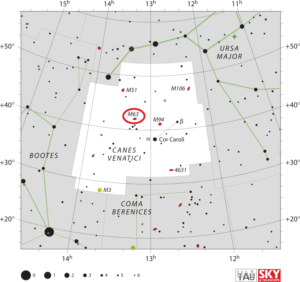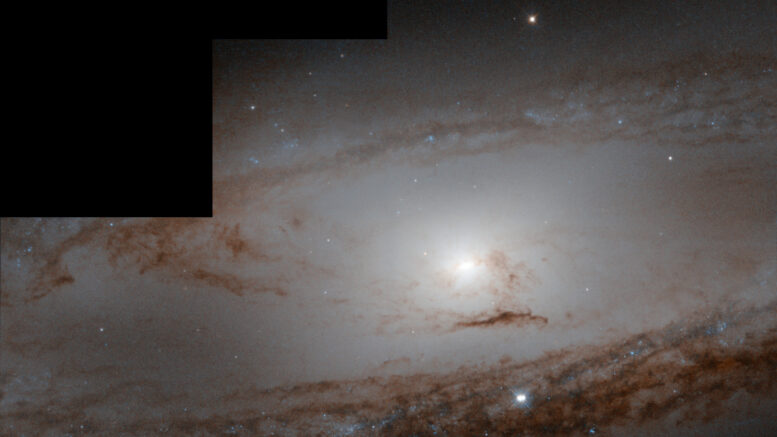Messier 65, also known as NGC 3623, is an intermediate spiral galaxy about 35 million light-years away in the constellation Leo. It was discovered by Charles Messier in 1780. Along with M66 and NGC 3628, M65 forms the Leo Triplet, a small group of galaxies.
| Description | |
| Visible From Pacific Northwest | |
| Best Time To Observe | |
| Minimum Size Of Viewing Device | |
| Object Type | Spiral Galaxy |
| Designations | Messier 65, M65, NGC 3623, PGC 34612, UGC 6328, 2MASX J11185595+1305319, MCG+02-29-018, TC 160, Z 1116.3+1322, APG 317B |
| Right Ascension | 11h 18m 55.9s |
| Declination | +13°05’32” |
| Constellation | Leo |
| Number Of Stars | 200 billion |
| Apparent magnitude | +10.25 |
| Apparent dimensions | 8′.709 x 2′.454 |
| Object Radius | 45,000 light years |
| Distance From Earth | 35 million light years |
History
Messier 65 was discovered by Charles Messier, but William Herschel wrongly attributed the discovery to Messier’s friend Pierre Méchain in his work A Cycle of Celestial Objects and Kenneth Glyn Jones picked up the error in the 1960s. A number of sources now wrongly credit Méchain for the discovery even though Messier never acknowledged his colleague’s sighting.
Messier discovered M65 and M66 on March 1, 1780. He described M65 as a “nebula discovered in Leo: It is very faint and contains no star.”
William Herschel described M65 as “a very brilliant nebula extended in the meridian, about 12′ long. It has a bright nucleus, the light of which suddenly diminishes on its border, and two opposite very faint branches.”
John Herschel catalogued M65 as h 854 and later added it to the General Catalogue as GC 2373, describing the object as “bright; very large; much extended in position angle about 165 degrees +/-; gradually brighter toward the middle where there is a bright nucleus.”
Admiral William Henry Smyth noted that M66 was “preceded at about 73s by another of a similar shape, which is Messier’s No. 65, and both are in the field at the same time, under a moderate power, together with several stars. They were pointed out by Méchain to Messier in 1780, and they appeared faint and hazy to him.”
Locating M65 In The Sky
Messier 65 can be found along the line from Denebola to Regulus. The galaxy lies right between the stars Iota Leonis and Chertan, Theta Leonis. It can be found only 3 degrees from Chertan. The best time of year to observe M65 is during the spring.

Viewing M65
The galaxy lies in the eastern part of Leo. Thanks to its high surface brightness, it is visible even in small binoculars and appears as an oval shaped patch, along with its bright neighbour M66. Small telescopes begin to reveal the structure of the pair, with a bright central core surrounded by a thin disk of light. To see the third member of the Leo Triplet, however, one needs at least a 6-inch telescope. Larger telescopes reveal the dark dust lanes and other details of M65.
Photographing M65
It is possible to obtain the Leo Triplet into 1 image, which is M65, M66, and NGC 3628. When photographing the Leo Triplet, make sure that the camera being utilized is accurately aimed so that all three are comfortably in the shot. The Leo Triplet is a bit more sophisticated than a single galaxy as there are 3 galaxies in this image, but they can be imaged together using almost any sized telescope. All 3 galaxies are similar in brightness, color, and size, which makes editing easier than one would expect from multiple objects in the same image.
https://www.galactic-hunter.com/post/leotriplet
Sources And Further Reading
Descriptions of all of Messier Objects can be found here.
https://www.nasa.gov/feature/goddard/2017/messier-65
https://www.messier.seds.org/m/m065.html
https://freestarcharts.com/messier-65

Be the first to comment on "Messier 65"